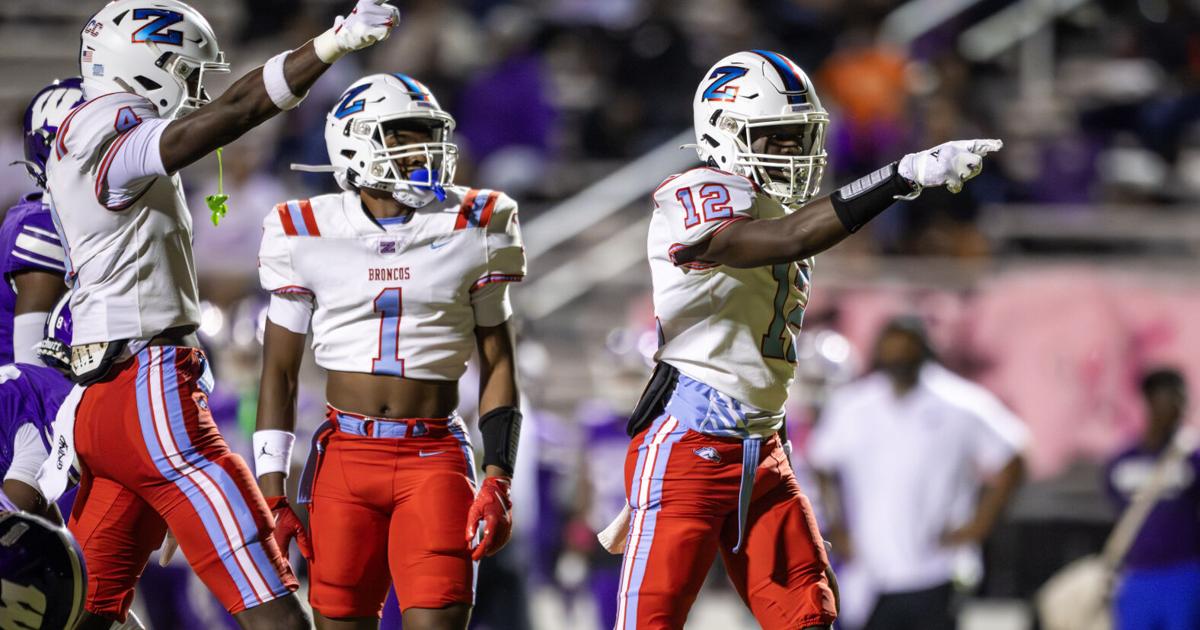Copyright sandiegouniontribune

Growing up on the Rincon Reservation as a descendant of the Rincon Band of Luiseno Indians, Priscilla Ortiz Sawah spent a lot of time inland that gave her a specific understanding of what she says it meant “to be a traditional Luiseno girl, or Kumeyaay girl.” As she got older, she learned a lot more. “When I got older and I got to travel to other reservations and meet different tribes, and also attend classes at Kumeyaay Community College, I got to learn more about the history and our old practices that are done more recreate recreationally,” she says. “At KCC is where I really learned and got that knowledge that Kumeyaay people are of the ocean, the valleys, the mountains, and the deserts. Seeing that the seasonal migration wasn’t just something that all Indians did; we had a relationship with this land that we were in. It kind of just brought me closer to my own understanding and my own relationship that I already had with the Earth, knowing that it also stretched into the ocean. Knowing how important and how big a part the ocean played in our creation story. It just ties everything together.” Ortiz Sawah, who is also Iipaaya/Kumeyaay from the Santa Ysabel Reservation, is a co-designer of Indigenous Ocean Day at Birch Aquarium at Scripps from 11 a.m. to 3 p.m. on Saturday. This annual celebration of Indigenous people and ocean knowledge began in 2024 and features bird singing, storytelling, ethnobotany with native plants, hands-on activities (including making a tule boat), and the chance to connect with and learn about Indigenous organizations and the Native people of the region. (This event is open to the public and included with the price of aquarium admission.) Ortiz Sawah, 25, lives in Lakeside and is working toward a degree in education, with the goal of teaching American Indian Studies, and she’s also a program coordinator at Kumeyaay Community College. She talks about Indigenous ocean knowledge, the ethnobotany and tule boat making planned for Saturday, and the resilience of Indigenous people. (This interview has been edited for length and clarity.) Q: Can you talk about how this event first came together last year? Where did the idea to first do something like this come from? A: I think it was kind of formed out of a lot of conversations, but I will say it was really spearheaded by Nan Renner. She’s the director of strategic partnerships at Birch Aquarium and she, on her own, started volunteering at Kumeyaay Community College, taking classes in ethnobotany and taking humanities courses, and just kind of built her own connection with us. After conversations about land back, about the importance of Indigenous people needing access to their original homelands and everything, she saw that as a way to use her position to ensure that, as Kumeyaay people, we have space at Birch. We told her it’d be really cool if we could just come to come to the aquarium and be Indigenous there, see what our seaweed was like because we’re always hearing about all this research being done on the ocean, and that UC San Diego is such a big proponent of research. She started bringing in people like Michael Connolly (Miskwish), who wrote our Kumeyaay history book. She brought in Heather Ponchetti Daly, is a tribal member of the Iipay Nation of Santa Ysabel (and a historian of 20th-century Native America) to talk to us as a community about what Indigenous Ocean Day should be. Q: What worked well last year that we’ll see again this weekend? What was included last year that we won’t see again this weekend, and what were the reasons for this shift? A: Last year, our Indigenous-inspired menu offered by one of the UCSD food trucks, was a really big hit. We did end up selling out last year, so this year we have made the change to bring even more food in. We are partnering with their new cafe, so the food will be served out of the cafe, rather than a food truck this year. We had bison nachos, bison burgers, and there were a few drinks that, I think, had some sage and some mint in them. Q: You grew up on the Rincon Reservation and were involved in various youth programs that included bird dancing to bird singing? Can you talk a bit about your own background and its influence on you pursuing this kind of work? A: I think bringing the Indigenous perspective of event hosting, so ensuring that the elders will be cared for when they’re at the event, that they have suitable parking; ensuring that our bird singers will be there, that they can share their songs and our prayers and our offerings to the ocean. Like I said, we are reconnecting with the ocean as Kumeyaay people, so it’s really up to us to create a place where elders can come and remind us, rather than having our elders do the organizing and the emails and the meetings. We’re more setting the platform for them to be able to come and share that knowledge in a space that feels safe to them. We’re also ensuring that we have a quiet place in the corner, recognizing the passings that have happened. Within our tribal communities, we have had some elder passings, so I’ve also been advising them on when to hold off on emails, or that maybe a phone call wouldn’t be good today. We’ve also been able to work with the Living Seas exhibition. They have digital plaques, so for Indigenous Ocean Day, and through the end of the month, we’ll have the Kumeyaay word for our native species on the plaques throughout the Living Seas exhibition in the aquarium. Q: For people who may not know, how would you describe what Indigenous ocean knowledge is? What it looks like in practice? A: Indigenous ocean knowledge encapsulates a lot because, with ocean knowledge, we’re talking about how the sea was stewarded back in the day, which is really important. We’ve also noticed that we can’t steward that same way anymore. Ocean knowledge is also talking about ocean growth, ocean change. So, just having those conversations reflecting on how fishing practices were back in the day, versus what they might be like now, and ways that we can continue our traditional fishing practices with the laws and policies that are in place right now. Talking about sustaining the practices, and remembering and reflecting back on the journal entries that were written, reflecting back on the work that’s being done by different youth programs taking trips out to the ocean and looking for mussels. Or, going out and doing a grunion run every year, and using the language while they do it. Q: Can you share any examples of what people can learn about ethnobotany and native plants on Saturday? A: Yeah, we have an amazing work called ‘Ataaxum Pomkwaan, and that is Payomkawichum, or Luiseno, for “for the people.” They bring out their medicinal plant project, which has a nice plethora of California native species—cottonwood, sagebrush, our medicines and stuff—and they’ll explain the medicinal properties of it and how you can use those for bruises, use it for aches, or to cure an upset stomach. What’s really cool is they also have balms with the traditional plants in it, and it helps with joint pain, bruising, stomach aches, and stuff like that. Q: What is the significance of a tradition like tule boat making, that’s part of this year’s program? A: Tule boat making is something that we’re just continuing to revitalize the practice of. I’m not sure if we’re going to be launching this year, but just the practice of building it is going to be done this year. Tule is a type of reed that grows by bodies of water. We’ve started collecting from local Audubon societies. The Anstine-Audubon has allowed us to come gather; Cuyamaca Mountain have let us come by; we gather over by Kumeyaay Lake, up in Cuyamaca, sometimes. So, it’s a reed and it’s a nice, deep green when it’s in the in the water. We harvest it—you gather it with machete, cut it down toward the base, but you don’t pull it out from the root because that would stop the growth. You cut it kind of where it meets the water. Then, we lay that out for a couple of weeks, and then we bundle them together. What will be brought to the event is the dry tule, and that’s where participants will be able to bundle it together and build it into a boat. A tule boat is constructed with our tule, but we also would have done rope, which would traditionally be made with agave or Yucca fibers. Now, we round that up at Home Depot. The inside of the boat, in order to hold its structure, that is held together with a willow branch. The boats are pretty canoe-shaped. Q: With Indigenous Ocean Day celebrating and centering Indigenous people and culture, and November also recognized as Native American Heritage Month, what are some ways that it’s important to you to celebrate the culture and history of your people and the land where you live? A: I think it’s by doing things exactly like this, coming out in community, especially during this month. Coming out into community, seeing family members, organizing partners. I think that’s kind of the best way. And, remembering that these aren’t just one-day events; these are adapting with us, they’re growing with us, and they’re still being done. They’re deeply tied to who we are as people. The place might change, but as long as we continue to come out and see each other, we’ll always be resilient. I think that’s the best way to go see your Native people.



